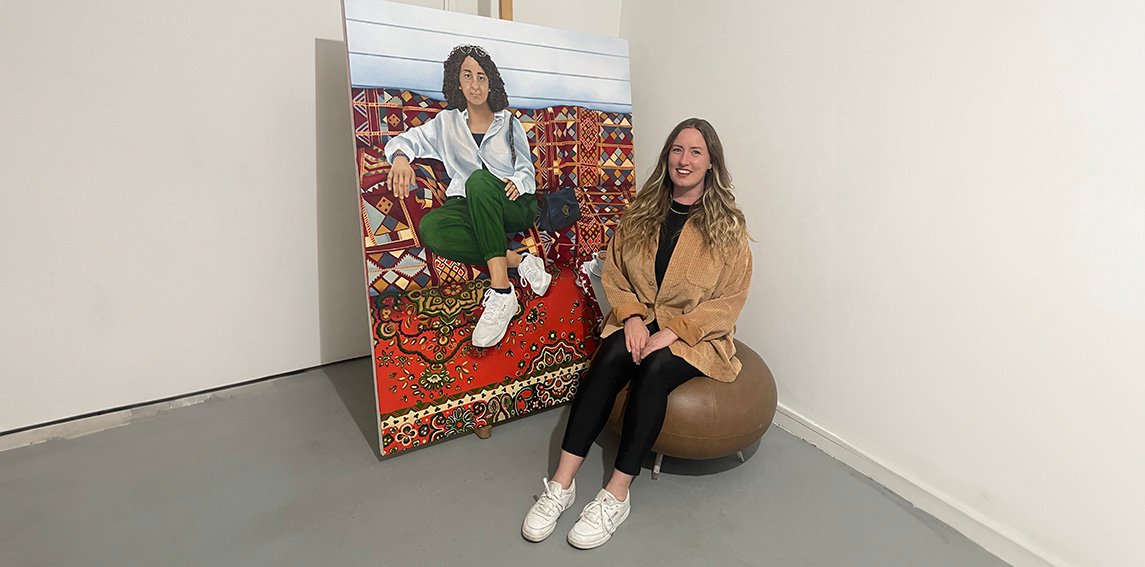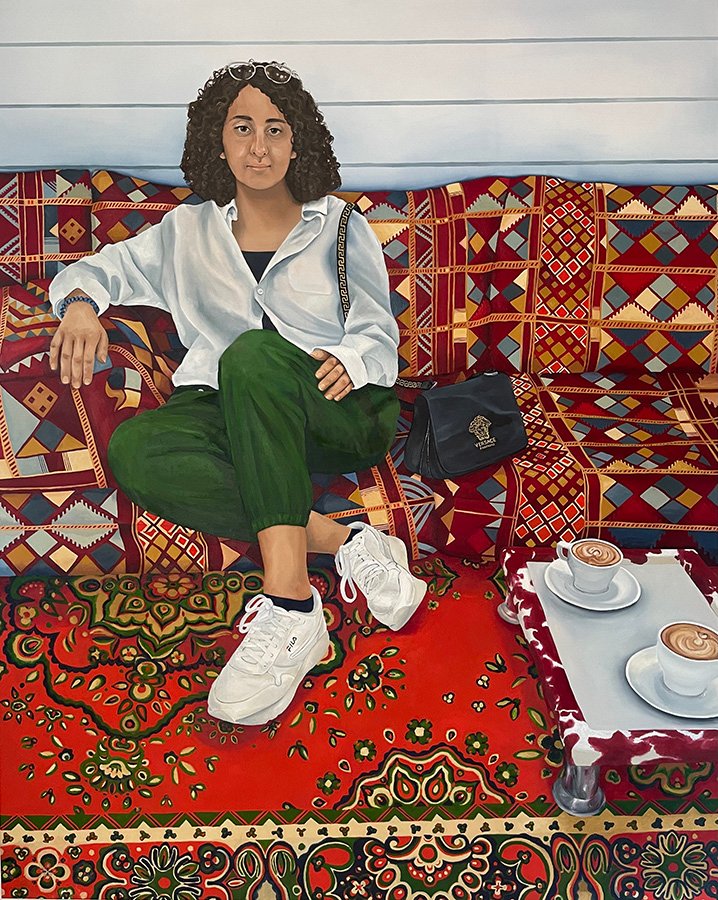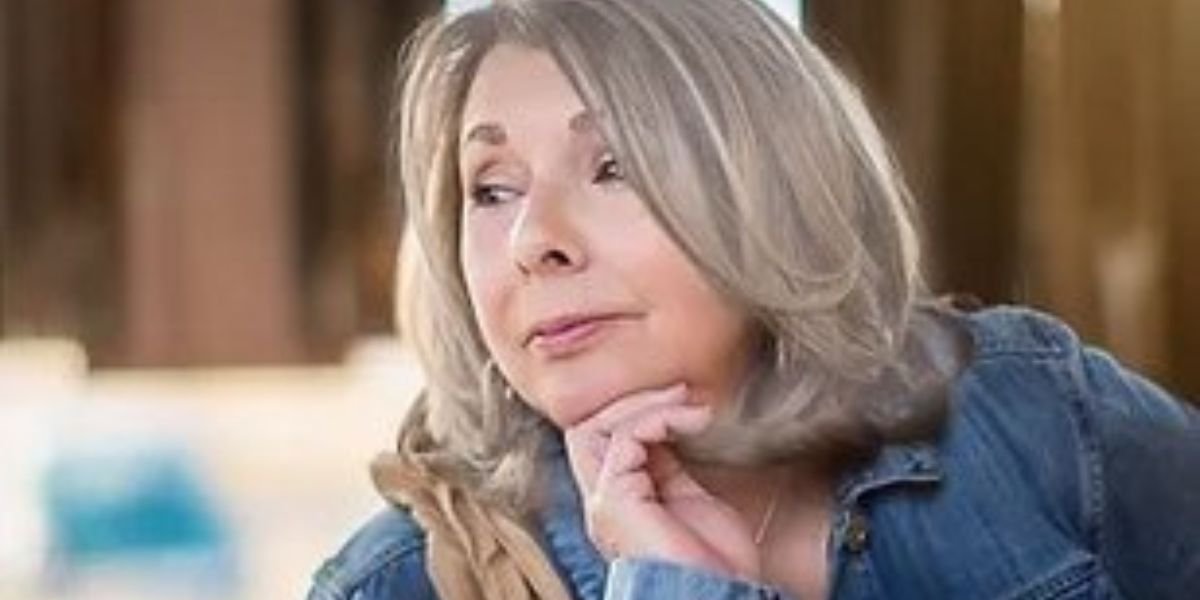Unveiling Humanity – The Art of Catherine Chambers

Catherine Chambers explores identity and social status through her vibrant paintings, inspired by her deep connections to Ethiopia and universal human experiences
Catherine Chambers discusses how her Ethiopian experiences shape her art, exploring themes of identity, social status, and universal human connections through figurative painting and storytelling.
Catherine Chambers’ art serves as a powerful bridge between cultures, exploring the intricacies of identity, social status, and the universal human experience. With a deep connection to Ethiopia, Chambers reflects on the shared narratives that bind people across geographic and cultural divides. Her unique approach combines figurative oil paintings and an acrylic icon series, allowing her to navigate complex themes through personal stories and societal observations. Through this interview, Chambers reveals how her travels, friendships, and keen social awareness inform her artistic practice, resulting in works that challenge perceptions and encourage meaningful dialogue.
Catherine Chambers is a remarkable artist whose keen observations of society resonate deeply through her work. She masterfully intertwines personal narratives with broader social issues, capturing the essence of human experience with profound empathy and insight. Each piece reflects her dedication to storytelling, making her art not only visually striking but also intellectually engaging.
Catherine Chambers is a visionary artist whose compelling work beautifully merges personal stories with broader societal themes, offering profound insights into the human experience.
Your work often explores universal themes such as identity, family ties, and social status, while drawing inspiration from your connection to Ethiopia. How has your time in Ethiopia shaped your understanding of these themes, and how do they manifest in your art?
People the world over perform the same basic activities to support their lives. My Ethiopian friends do exactly, in the setting of their environment and culture, as I do in mine. I find that initial experience on visiting a new country can be misleading and one notices the unexpected and superficial differences such as the forms of buildings, imposing landscape and unfamiliar language. Beyond those, it becomes apparent that differences between communities are largely imposed by the system of government, local politics, history, religion and existing local and international tensions. They are not made by choice at a personal level.
With the almost universal use of smart phones and the internet, to access information of life in other countries, peoples’ personal aspirations are becoming ever more alike whatever their place of origin.
The material for my art is based on friendships, conversations with new acquaintances and shared experiences that inform my understanding, including for example witnessing that a new friend’s life might be complicated by rules and dictates of some authority beyond their control.
Wherever, or with whoever, I spend time is important to me. In recent years working periodically in the Middle East has influenced me and is stimulating new works. My experiences and interpretations accumulate and I carry them all with me, for reflection, comparison and better understanding of others and myself.

You work in two distinct styles: figurative oil paintings and your acrylic icon series. How do you decide which medium and style to use for a particular subject, and what do these two approaches allow you to express differently? Your icon series uses a triptych format for storytelling, often incorporating anecdotes from your sitters. What drew you to this format, and how do you think it deepens the narrative aspects of your work?
My paintings are snapshots. They show a moment but also allude to events before and after and contain clues to wider interpretations.
When painting a particular figure, I am focused on that specific person or people. Everyone I paint I have a close friendship with. The paintings often reflect on a social issue, but always have a personal story to them as well. For example, in “Lying” which is currently being exhibited at the National Portrait Gallery, you are presented with a man asleep, he is alone and may be dreaming and there is a vulnerability to the picture. He is silent and the picture is silent, there may be something untold. However, a man in a football shirt is a familiar sight and the message I wanted to convey with it affects many. Often, sponsors’ products are entirely inaccessible to the football fan proudly wearing their team’s shirt; An airline sponsoring a top European club will not always represent a realistic travel opportunity for a youth living in a remote African town.
Icons are very much part of the Orthodox Christian culture of Lalibela – they are unavoidable as original religious representations in churches and homes and more recently as products for tourists – they are immediately attractive, colourful and their simplified imagery easily interpreted. I collected many in Lalibela and realised that this is a format I might use.
I use my icons when I am telling of events, perhaps of my or a friend’s experiences over a period of time. The tryptic format allows an introduction, development and conclusion of narrative in the manner of a fable. Other people elsewhere may have similar experiences (the artist Pins has called them ‘Universitales’). Ethiopian religious icons are active reminders of a believer’s obligations, mine are reminders that actions have consequences perhaps not those anticipated.
In your paintings of people, you often include symbolic items that challenge traditional perceptions of time and place. Can you tell us more about how you choose these elements, and how you hope they alter viewers’ preconceived ideas?
My paintings are usually set in locations where many ‘props’ are available. I select on the basis of what I feel best describes the setting and the activities and interests of the person or people in the picture. Some items may appear unexpected, out of place or foreign but they belong to, and are used by, the subjects. I show what contributes to an understanding of the picture. I learn of preconceptions from comments on completion and am often baffled that no explanation can shift them
“If You Are Lucky” is a painting of a young girl, Yeabsra, playing cards in the compound where I lived with her and her family (there are the edges of some cards peeping from the bottom of the canvas – they were mine, she was teaching me a game). A viewer of the painting in London once told me that the location couldn’t be Lalibela, because “they don’t have playing cards there”. This man had never visited Lalibela but was adamant on this, which amused me. The cards in the painting were bought from a small shop a ten-minute walk from the scene in the painting!
In “Holding Space” my friend’s Versace bag in contrast to her Fila trainers has also sparked comments on wealth; one viewer told me she must drive a nice car because of her bag, another assumed the bag was fake because of her Fila trainers. Neither is correct.
In both the above examples the items came with the subject, Yeabsra chose to bring the cards to play with and my friend arrived for the sitting wearing Fila trainers and carrying a ‘Versace’ bag. Knowing both sitters well nothing appeared incongruous to me. The reactions of the viewers is suggesting to me another painting.
The items in my paintings seem to bring home and away, us and them, into one space.
Your appreciation for artists like William Hogarth, known for his social commentary, seems to influence your approach. How do you see your work continuing this tradition of storytelling and social observation, particularly within the context of cross-cultural interactions?
William Hogarth’s ‘Rake’s Progress’ was clearly somewhere in my mind when I was told of the events that led my ‘Brother’s Progress’ such that his became the model for mine. His powers of detailed observation and clarity of representation inspired me to follow his format. The story of a wealthy, ageing, foreign visitor to Ethiopia seeking to invest in the future of an Ethiopian youth and the consequences raises many questions including ‘for who’s benefit?’, ‘on what basis was the recipient selected and the arrangement made’, ‘was the venture ill considered?’ and so on. Such questions could seed further works. These are universal questions that can be asked of any inter-personal arrangement within a culture or cross-culturally when misunderstandings might be more likely to occur.












